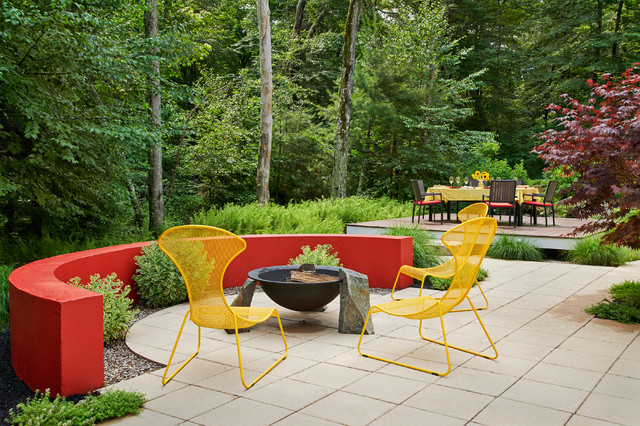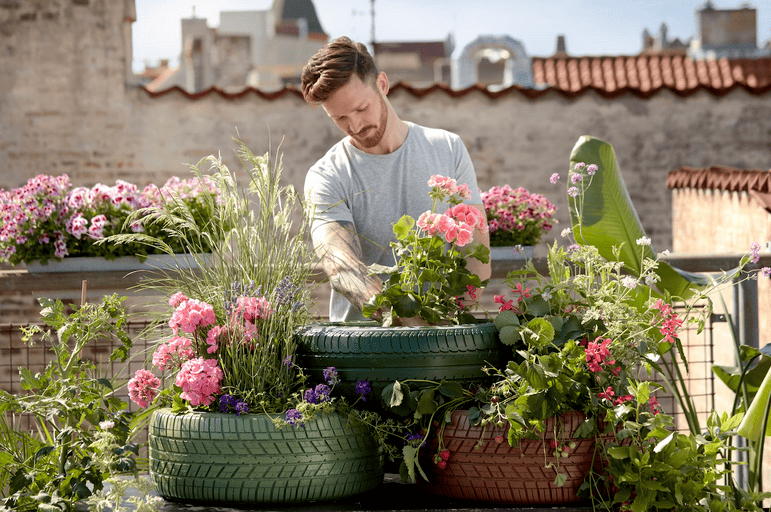A home garden can be a beautiful and refreshing addition to any space, providing relaxation, fresh air, and a bit of nature. However, maintaining a garden often requires time and effort, which can be challenging for those with busy schedules. Fortunately, a low-maintenance home garden is a solution that lets you enjoy the benefits of greenery without the constant upkeep.

Creating a low-maintenance home garden allows you to have a vibrant garden with minimal time and effort. From choosing hardy plants to setting up efficient watering systems, there are plenty of ways to reduce the workload involved. In this guide, we’ll walk you through practical steps to create a low-maintenance home garden that fits your lifestyle.
Choosing the Right Plants for a Low-Maintenance Home Garden
Selecting Hardy and Drought-Tolerant Plants
A key to a successful low-maintenance home garden is choosing hardy, drought-tolerant plants. Succulents, cacti, and native plants are excellent options because they thrive in various conditions and require less watering. These plants can survive periods of neglect, making them ideal for a low-maintenance setup.
Additionally, perennial plants are another great choice as they return year after year without replanting. This reduces the time needed for garden upkeep and makes your garden more sustainable. By selecting these types of plants, you lay the foundation for a truly low-maintenance home garden.
Focusing on Native Plants
Native plants are naturally adapted to your local climate, making them perfect for a low-maintenance home garden. They require less water, fertilizer, and care since they are already suited to the surrounding environment. Native plants are also more resistant to local pests, reducing the need for pesticides or special treatments.
Moreover, native plants support local wildlife and pollinators, such as bees and butterflies, adding ecological value to your garden. By incorporating native species, your low-maintenance home garden becomes easier to care for while also benefiting the ecosystem around you.
Planning Efficient Watering Techniques
Setting Up a Drip Irrigation System
One of the most efficient ways to water a low-maintenance home garden is by installing a drip irrigation system. Drip irrigation delivers water directly to the roots, minimizing waste and reducing the need for frequent watering. This system is ideal for low-maintenance gardens because it requires little attention once installed.
With drip irrigation, you can even use timers to automate watering schedules, ensuring that your plants receive consistent moisture. This setup is particularly helpful for busy individuals, making a low-maintenance home garden much easier to manage in the long run.
Using Mulch to Conserve Moisture
Mulch is a simple yet powerful addition to any low-maintenance home garden. By spreading a layer of mulch over the soil, you can significantly reduce water evaporation, helping your plants retain moisture longer. Mulch also suppresses weeds, reducing the amount of weeding required in your garden.
Organic mulches, such as bark or compost, also improve soil quality as they decompose, adding nutrients to your garden. With mulch, you can cut down on both watering and maintenance time, making your low-maintenance home garden even easier to care for.
Minimizing Maintenance with Smart Garden Layout
Grouping Plants by Water and Sunlight Needs
A smart layout can make a big difference in a low-maintenance home garden. Start by grouping plants with similar water and sunlight requirements together, which allows you to meet their needs more efficiently. This way, you won’t have to worry about overwatering or under-sunning specific plants.
By organizing your garden this way, you reduce the likelihood of stressed plants, which means fewer issues to address over time. This approach not only simplifies care routines but also creates a balanced, thriving low-maintenance home garden that requires less intervention.
Creating Defined Garden Zones
Defining zones within your garden is another useful strategy for reducing maintenance. For example, dedicate one area to low-water plants and another for shade-loving species. By clearly zoning your garden, you can streamline your care efforts and minimize the need for frequent adjustments.
Garden zones also allow you to create visually appealing sections, making your low-maintenance home garden more organized and enjoyable. With defined zones, you can focus on each area’s unique needs without overwhelming yourself, keeping maintenance simple and efficient.
Reducing Weeds and Pests in a Low-Maintenance Home Garden
Preventing Weeds with Ground Cover Plants
Weeds can quickly take over a garden, but you can minimize them with the right ground cover plants. Low-growing plants like creeping thyme or sedum act as natural weed barriers, filling spaces where weeds might otherwise grow. Ground cover plants are a fantastic addition to any low-maintenance home garden because they require minimal care once established.
In addition to controlling weeds, ground covers add texture and beauty to your garden design. By using these plants strategically, you reduce weeding time and maintain a neat, low-maintenance home garden effortlessly.
Managing Pests Naturally
Pest control can be another time-consuming aspect of gardening, but in a low-maintenance home garden, you can handle it more efficiently. Use natural pest repellents, such as marigolds, which deter common pests and require little maintenance. Companion planting is another effective approach, pairing plants that naturally repel pests to protect each other.
By choosing pest-resistant plants and natural repellents, you maintain home garden that doesn’t rely on frequent treatments or chemical sprays. This keeps your garden healthier, environmentally friendly, and easy to manage with minimal effort.
Using Garden Tools and Accessories for Easy Maintenance
Choosing Low-Maintenance Garden Tools
Investing in quality, low-maintenance garden tools can make your work much easier. Look for tools that require minimal upkeep, like rust-resistant trowels and self-cleaning pruners. These tools save time and last longer, reducing the need for frequent replacements.
Moreover, keeping essential tools nearby in a garden shed or toolbox streamlines your gardening routine. With easy access to efficient tools, your low-maintenance home garden will be a breeze to care for, allowing you to focus more on enjoying your space than maintaining it.
Adding Automatic Lighting and Watering Systems
Automatic systems, such as timed lighting or sprinklers, can be highly beneficial for a home garden. Solar-powered lights illuminate your garden without additional energy costs, and sprinklers with timers make watering a hands-off task. These systems add convenience while keeping your garden visually appealing and well-maintained.
By incorporating these automated solutions, your low-maintenance becomes more self-sufficient, further minimizing your workload. This approach allows you to enjoy the beauty of your garden with minimal intervention, enhancing both the functionality and aesthetics of your outdoor space.
Conclusion, Creating a low-maintenance home garden is about choosing the right plants, tools, and strategies to reduce the time and effort required for upkeep. From selecting hardy plants and efficient watering systems to using natural weed control, these tips will help you build a garden that thrives with minimal attention. home garden offers the perfect balance between beauty and ease, allowing you to enjoy a lush, green space without the constant hassle. Embrace these steps to start your own home garden and enjoy a beautiful, stress-free retreat right at home.


